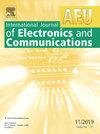Experimental validation of a high-frequency memristor emulator based on CCCCTA framework and its application in chaos circuit
IF 3
3区 计算机科学
Q2 ENGINEERING, ELECTRICAL & ELECTRONIC
Aeu-International Journal of Electronics and Communications
Pub Date : 2025-02-01
DOI:10.1016/j.aeue.2024.155624
引用次数: 0
Abstract
In this article, we introduce a Memristor Emulator model employing a single analog building block i.e., the Current Controlled Current Conveyor Transconductance Amplifier (CCCCTA), along with two resistors and one capacitor. The proposed memristor emulator operates up to 1 MHz and spans over a chip area of . In addition, by using a simple switch connection, the proposed emulator circuit can be configured in both incremental as well as decremental configurations. The simulation results are based on a 1.1 V power supply and have been carried out on a 180 nm CMOS technology node. The results perfectly corroborate the theoretical propositions. Besides, the design incurs a power consumption of only 2.2 mW. The performance measures of the proposed memristor model have been assessed using Monte Carlo simulations. In addition, we have also verified the theoretical findings experimentally using off-the-shelf integrated circuits. The non-ideal analysis and post-layout simulations have been added to show the effects of the parasitic resistances and capacitances on the proposed memristor emulator. The effect of noise at the input has been incorporated using computer simulation to further assess the robust nature of the design. At last, we show the applicability of the proposed emulator circuit in generating chaos as well as amoeba’s adaptive behavior.
求助全文
约1分钟内获得全文
求助全文
来源期刊
CiteScore
6.90
自引率
18.80%
发文量
292
审稿时长
4.9 months
期刊介绍:
AEÜ is an international scientific journal which publishes both original works and invited tutorials. The journal''s scope covers all aspects of theory and design of circuits, systems and devices for electronics, signal processing, and communication, including:
signal and system theory, digital signal processing
network theory and circuit design
information theory, communication theory and techniques, modulation, source and channel coding
switching theory and techniques, communication protocols
optical communications
microwave theory and techniques, radar, sonar
antennas, wave propagation
AEÜ publishes full papers and letters with very short turn around time but a high standard review process. Review cycles are typically finished within twelve weeks by application of modern electronic communication facilities.

 求助内容:
求助内容: 应助结果提醒方式:
应助结果提醒方式:


